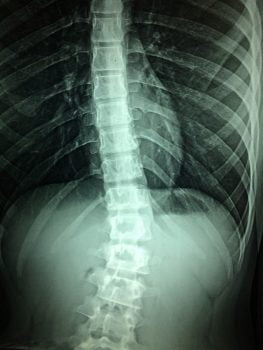Spinal cord injury causes permanent changes, with symptoms that can include loss of muscle function, strength and sensation, as well as loss of other body functions supported by the spine. Chances of complete recovery are slim and the process is long and difficult, even with aggressive rehabilitation and especially if treatment isn’t immediate.
A new study published in the Journal of Neurotrauma in July by researchers at Tel Aviv University claims that a prompt, uncomplicated treatment may be the simplest, quickest way to deal with a spinal cord injury and diminish symptoms such as inflammation and scarring.
The treatment involves the injection of a potent enzyme into the spinal cord intravenously, just hours after an incident.
The study was conducted by Dr. Angela Ruban and Dr. Yona Goldshmit from TAU’s Sackler Faculty of Medicine. Goldshmit is also an adjunct research fellow at the Australian Regenerative Medicine Institute at Monash University in Melbourne.
The main idea, Dr. Goldshmit says, is to block the body’s natural reaction to spinal cord injury, by reducing the secondary damage as soon as possible.
“Primary mechanical damage to spinal cord tissue kills a certain amount of neuronal cells. But there’s secondary damage due to the release of excess glutamates, which are responsible for additional functional disability,” Dr. Goldshmit said in a press release, “This is the role of the enzyme injection we devised.”
“We realized that injecting the enzyme reduces those temporary high glutamine levels, changing the balance of concentration between brain and blood,” Dr. Ruban tells NoCamels.
But it’s a tricky situation, she warns. “When you are trying to affect the central nervous system, there are many side effects because it’s so delicate.”
SEE ALSO: Israeli Company’s Futuristic Back Implant Can Repair Damaged Spines
The treatment was tested on lab mice and over the course of five days, the animals showed significant recovery from the injury, according to the study.
“The treatment increased the survival of neurons at the lesion site and enabled axonal regeneration into the injury site, which resulted in significant functional recovery compared with the untreated mice,” Ruban said in the university statement. “This indicates that drug intervention with blood glutamate scavengers following spinal cord injury may be neuroprotective and may create a regenerative environment.”
Don’t wait
Sign up for our free weekly newsletter
SubscribeThe research, the scientists say, showed that neurotrauma, in this case traumatic spinal cord injury that could likely result in lifelong disability or even death, produced elevated extracellular glutamate levels immediately, which led to inflammation, scarring, and neuronal death.
The key takeaway is not to wait to diagnose or treat it, Ruban said. “It’s similar to aspirin, which can rescue a cardiac patient from irreversible damage if taken within the first few hours of a heart attack. We suggest administering the injection even in cases of an uncertain diagnosis. There’s no side effect to the injection, but it might just mitigate secondary damage and dramatically improve the quality of a person’s life,” she added.
“When this new treatment will be available to paramedics, the consequences of injuries could be dramatically reduced,” she said
Goldshmit said the goal was to reduce the amount of glutamate that is released at first. If we do that, she explained, “we can moderate the inflammation and scarring, thereby moderating the damage to the tissue and enabling neuronal cells to survive.
First discovery
Ruban developed the blood glutamate scavenging approach with the late Prof. Vivian I. Teichberg of Israel’s Weizmann Institute of Science back in 2006, controlling the levels of glutamate in patients with diseases including glioblastoma and ALS.
They didn’t focus specifically on spinal cord injuries at first, instead trying to treat “neurological and pathological situations with a new approach to evaluating neurotrauma,” Dr. Ruban said of her work with Teichberg. Dealing specifically with spine trauma only came later with this particular study.
SEE ALSO: New Minimally Invasive System For Spinal Correction
What took so long? Dr. Ruban tells NoCamels that the answer can be attributed to the nature of a being a high-level researcher.
Our spinal treatment, the injection of the enzyme, appeared to be a super simple quick fix for the problem, she explained, and when you come up with an easy solution as a scientist, other scientists immediately say it’s too obvious, it won’t work.
“It’s in the nature of a researcher to search for something more complicated,” she says, “but in the end this simple solution was one that actually seemed to work.”
Related posts

Israeli Medical Technologies That Could Change The World

Harnessing Our Own Bodies For Side Effect-Free Weight Loss

Missing Protein Could Unlock Treatment For Aggressive Lung Cancer





Facebook comments